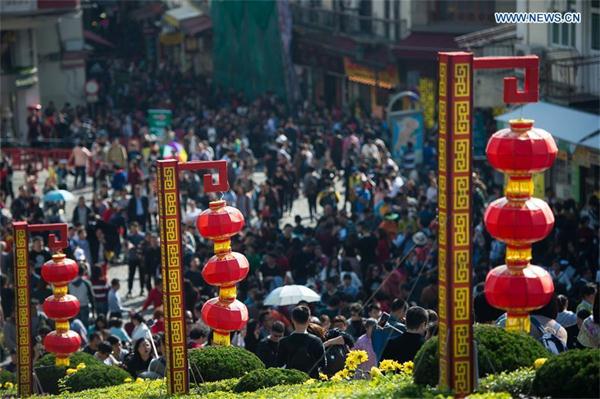Legal duty to limit visitor numbers
 |
|
Tourists visit the Ruins of St. Paul's in Macao, South China, on Feb 1, 2017, during China's Lunar New Year holiday. [Photo/Xinhua] |
THE RESTRICTIONS on the number of tourists that can visit scenic attractions are compulsory legal limits that must be strictly abided by for safety concerns. Beijing Youth Daily commented on Thursday:
The Spring Festival holiday has seen not only an exodus of people from the big cities, but also a tourist rush to scenic areas in China.
However, some scenic areas receive more tourists than they should. According to reports by Xinhua News Agency, 64,700 tourists visited Tianmen Mountain in Central China's Hunan province on Tuesday, more than four times its legal limit. Excessive numbers of visitors were also evident in Aizhai Town, Fenghuang Ancient Town and Hengshan Mountain in the province.
The legal limits on the number of tourists allowed at various tourist attractions are set out in the Tourism Law and are calculated to not only protect the natural scenery and historical relics, but also to ensure the safety of tourists.
After the Chinese Lunar New Year crush on the Shanghai Bund in 2015, which killed 36 people and wounded 49, the central authority imposed compulsory caps on the number of visitors at tourist sites. Breaking these limits constitutes a violation of the Tourism Law, and the owner and managers of the scenic spots, must be punished, even if no public safety accidents happen.
The scenic areas in Hunan have the audacity to ignore the legal limits on the number of visitors they can receive, because no violators of the law have ever been punished.
Also, local tourism administrations are obliged to provide the latest weather, traffic and tourist number information of their scenic areas to help people plan their trips.
In Hunan, the local authorities have obviously neglected their duty to ensure the safety of tourists.



















